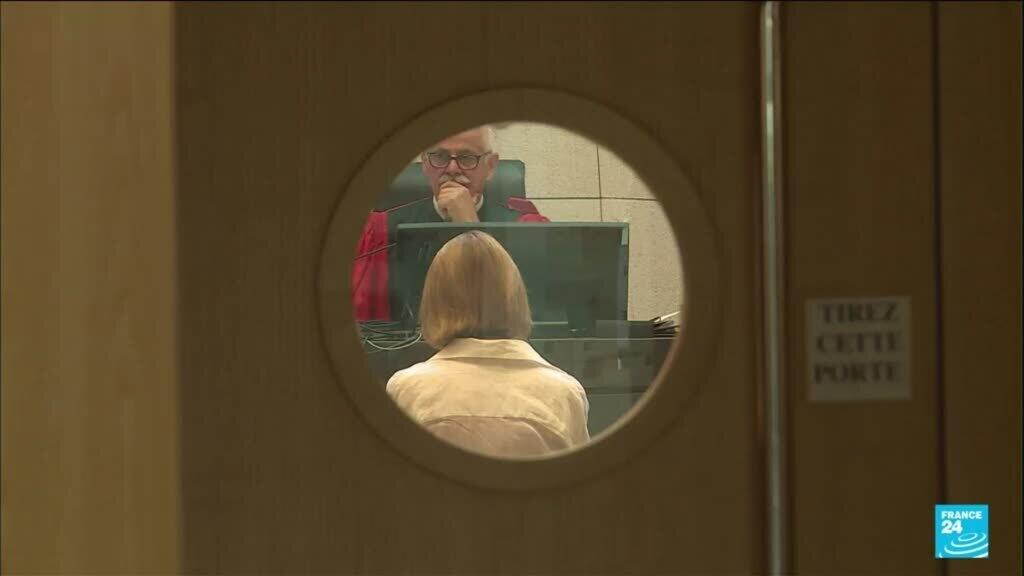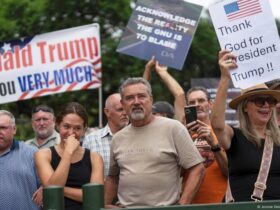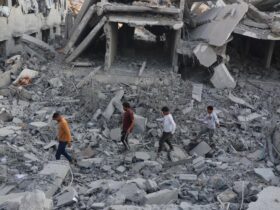It has been 33 years since America conducted an explosive nuclear weapon test. But, on Wednesday, US President Donald Trump was seen ordering him to be reinstated ‘immediately’.
A post by the President on the Truth social platform mentioned the nuclear threat from Russia and China. Referring to the recently replaced US Defense Department, he wrote, “Because of the testing programs of other countries, I have directed the War Department to begin testing our nuclear weapons on a similar basis.”
A few days ago, Trump had condemned Russia for testing its nuclear-powered missile. Should his clear promise become reality, it would mark a reversal of the decades-long moratorium on nuclear testing.
The Trump administration floated a similar idea during its first term, but it was ultimately shelved.
Could the US really detonate a nuclear weapon?
Nuclear weapons experts say it’s somewhat unclear what exactly Trump means by nuclear testing. This could simply mean something like the flight tests conducted by Russia – essentially carrying nuclear missiles or similar-sized weapons, but not detonating them. Or it could mean the complex and dangerous process of underground explosion.
Dr. Alexander Bolfras, head of strategy, technology and arms control at the International Institute for Strategic Studies, said, “I expect there will be flight tests of US intercontinental ballistic missiles, but I would be very surprised if the US resumed actual nuclear explosive testing.”Hink Tank with offices around the world, Told DW.
Given the lack of definitive information, Vitaly Fedchenko, a senior researcher at the Stockholm International Peace Research Institute (SIPRI), is also doubtful. He points out that the direction of Trump’s order may suggest a less severe alternative.
Fedchenko said, “The people in the US administration who are responsible for maintaining the ability to conduct nuclear tests are the Department of Energy, not Defense.” “So if they’ve ordered Defense to do that, then yes, maybe they’re talking about some type of missile tests and things of that nature. But if we’re talking about nuclear weapons, it’s the Department of Energy.”
Where will the potential blast test take place?
Both experts agree that were an explosion to be conducted, it would take place in the Nevada desert, where such tests were conducted before the current moratorium by most nuclear nations.
But Fedchenko told DW that, given that there are still very few people active with direct experience in this kind of testing, and given the complexity of the logistics needed to do it, any immediate action on this front seems unlikely.
“If we are looking for an actual trial date, it will take several years, at least 18 months, if everything goes according to plan,” he said. “It has to be designed in terms of where you’re going to put it. If it’s underground, you have to have a shaft or something like that, and that has to be drilled.
“You test underground, but it’s still a nuclear explosive, and if something doesn’t go according to plan, the test could cause some kind of spill or leakage of radioactivity into the atmosphere. So we’re talking about a potential radioactivity plume somewhere next to Las Vegas. You could even have seismic effects on those tall buildings.”
Where does Russia come into this?
Russia’s nuclear flight tests made headlines earlier in the week, with the country’s Chief of the General Staff Valery Gerasimov telling President Vladimir Putin that the military had “launched a several-hour flight of a nuclear-powered missile and it covered a range of 14,000 kilometers (8,700 miles), which is not the limit.”
But Bolfras doubts it will have an impact on the United States.
He said, “I don’t think the United States is trying to replicate what the Russians are doing. The US has a very clear modernization program for its nuclear weapons. Many of these date back to the post-Cold War era, so it makes sense to modernize them and bring new systems online.”
“But Russian so-called exotic, or novel, systems are mostly motivated by the fear that American missile defense will make it harder for their conventional nuclear weapons to get by. The United States does not have that fear, because Russia is not investing in missile defense like the United States is.”
Could other nuclear powers force a nuclear arms race?
Although Trump’s intentions, let alone his actions, are not yet clear, even such a statement could have an impact. Currently, according to SIPRI, the US, Russia, UK, France, China, India, Pakistan, North Korea and Israel are the countries considered “nuclear-armed states”.
according to a The report released by the organization earlier this yearAll were undergoing “a continued intensive nuclear modernization program into 2024, upgrading existing weapons and adding new variants”.
As Trump recently pointed out, the US has more nuclear weapons than any other country, with China a “distant third” behind Russia. But the Asian nation is set to double the size of its arsenal to an estimated 600 nuclear warheads in 2025 — up from 300 in 2020, according to the Center for Strategic and International Studies, a Washington-based think tank. This is projected to increase to more than 1,000 by 2030.
“Except in China, we are not seeing any large-scale nuclear build-up,” Bolfras said. “The United States is deeply concerned about the future. Not only does it have to shape its arsenal and nuclear stance toward Russia, but it also has to face a two-pronged competitive threat, as they say in the United States. So there is the possibility of an arms race.”
When it comes to tests, North Korea on Wednesday said it has test-fired strategic sea-to-surface cruise missiles, which are capable of carrying nuclear warheads, at a target in the Yellow Sea off the country’s coast.
How has nuclear testing worked in the past?
Most major nuclear powers, except North Korea, ceased explosive nuclear testing in the 1990s. North Korea conducted its last such nuclear test in 2017. Russia’s last confirmed test was in 1990, followed by the last US test in 1992 and China in 1996.
[Intheearlydaysofnucleartestingsince1945manytestswereconductedintheatmosphereratherthanunderground[1945सेपरमाणुपरीक्षणकेशुरुआतीदिनोंमेंकईपरीक्षणभूमिगतकेबजायवायुमंडलमेंकिएगएथे।Arms Control AssociationA group that records all nuclear tests notes that: “Most test sites are in the lands of indigenous peoples and far from the capitals of the test governments. A large number of initial tests – 528 – were detonated, spreading radioactive material into the atmosphere.”
The Limited Test Ban Treaty of 1963, signed by 123 states including the US and Russia but excluding North Korea, banned atmospheric tests because of their destructive effects. Although underground testing is considered safer, the possibility of “venting” as described by Fedchenko remains.
Edited by: Carla Bleiker





Leave a Reply